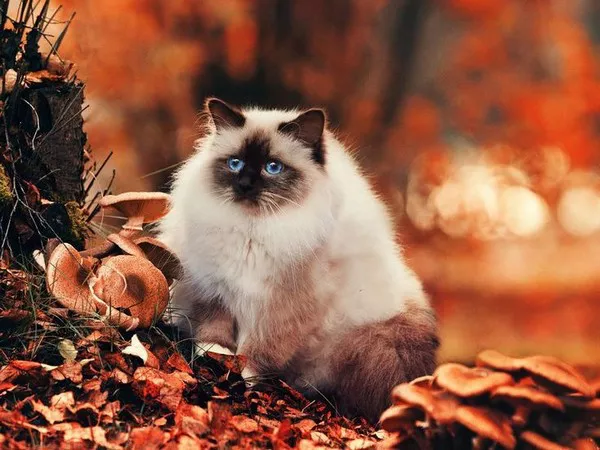Himalayan cats, known for their striking appearance and affectionate personalities, are beloved companions in many households. These cats, a crossbreed between Persian and Siamese cats, have a unique temperament that sets them apart. One of the frequently debated aspects of their behavior is their inclination towards solitude. In this article, we delve into the question: do Himalayan cats like to be alone? We explore the factors that influence their social tendencies and offer insights into their need for companionship.
Understanding the Himalayan Cat
Before addressing their preferences for solitude, let’s first understand the nature of Himalayan cats:
Elegance and Grace: Himalayans are known for their stunning appearance, characterized by long, luxurious fur, and striking color points similar to their Siamese ancestors.
Gentle and Affectionate: These cats are renowned for their gentle and affectionate nature. They tend to form strong bonds with their human caregivers and enjoy being a part of the family.
Playful and Playful: Himalayan cats are not only loving but also playful. They appreciate interactive play and often engage in activities that keep them mentally and physically stimulated.
Vocal Communicators: Like their Siamese ancestors, Himalayan cats are vocal communicators and are known for their melodious meows.
The Solitude Debate
The question of whether Himalayan cats prefer solitude or companionship sparks a healthy debate among cat enthusiasts and experts. The answer is not one-size-fits-all, as individual personality traits play a significant role in determining their social tendencies. Here are the key factors that influence a Himalayan cat’s desire for solitude:
Personalities Vary: Himalayan cats, like all felines, have unique personalities. Some may be more introverted and content with alone time, while others are extroverted and thrive on human interaction.
Socialization and Early Experiences: The socialization and early life experiences of a Himalayan cat play a vital role in their social tendencies. Cats that were exposed to positive social interactions as kittens are more likely to enjoy companionship.
Age and Activity Level: Age and activity level are essential considerations. Younger Himalayans tend to be more energetic and playful, often seeking out human and feline companions. Older cats may become more independent and prefer solitude.
Environmental Factors: The home environment and the presence of other pets also influence a Himalayan cat’s preference for solitude. If they share their space with other pets, their social dynamics can vary significantly.
Signs of a Solitary Himalayan Cat
Recognizing the signs of a Himalayan cat that prefers solitude is essential for providing them with a comfortable living environment:
Retreating to Quiet Spaces: If your Himalayan frequently seeks out quiet and isolated spots in your home, it may be a sign that they value their alone time.
Limited Interest in Play: While Himalayan cats are known for their playfulness, those who prefer solitude may show less interest in interactive play or social activities with other pets.
Independence in Grooming: Cats that groom themselves extensively and don’t seek assistance for grooming may appreciate their personal space.
Reserved Behavior: Solitary Himalayans tend to be more reserved in their interactions with humans and may prefer to observe rather than actively participate in household activities.
Meeting Their Social Needs
Understanding a Himalayan cat’s social preferences is the first step in providing them with the appropriate care and companionship. Here are some tips to ensure your Himalayan’s social needs are met:
Respect Their Space: If your Himalayan values alone time, respect their need for personal space. Ensure they have quiet, comfortable areas where they can retreat when desired.
Interactive Play: Engage in interactive play sessions with your cat regularly. This helps to fulfill their playfulness and provide social interaction on their terms.
Observe Their Signals: Pay attention to your cat’s body language and vocalizations. This will help you understand their mood and preferences for socialization.
Multiple Companionship Options: If you’re concerned about your Himalayan’s solitude, consider providing them with multiple companionship options. This could include the presence of other pets or interactive toys.
Consultation with a Veterinarian
If you’re uncertain about your Himalayan cat’s social tendencies or if you notice changes in their behavior, it’s advisable to consult with a veterinarian. Behavioral changes could indicate underlying health concerns that need to be addressed.
In conclusion, Himalayan cats’ preference for solitude or companionship varies based on individual personality, early experiences, and environmental factors. While some may thrive in the company of others, others may appreciate their alone time. Understanding your cat’s unique needs and providing the appropriate balance of companionship and solitude will ensure a happy and content Himalayan feline companion. Remember that whether they seek solitude or crave companionship, your Himalayan cat will always cherish the love and care you provide.

























